Abstract
The gastrin gene is expressed in fetal pancreatic islet cells, but in the adult is expressed mainly in the gastric antrum. To study the regulation of the gastrin promoter, we created several transgenes containing the human and rat gastrin 5' flanking regions joined to the coding sequences of the human gastrin gene. The human gastrin transgene contained 1,300 bp of 5' flanking DNA, while the rat gastrin transgene contained 450 bp of 5' flanking DNA. The human gastrin transgene was expressed in fetal islets, but was not expressed in adult gastric antrum. In contrast, the rat gastrin transgene was expressed in adult antral G cells, but no expression was observed in fetal islets. To study the possible role of gastrin as an islet growth factor, a chimeric insulin-gastrin (INS-GAS) transgene was created, in which the expression of the human gastrin gene is driven from the rat insulin I promoter. These INS-GAS mice were mated with mice overexpressing TGF alpha, transcribed from a mouse metallothionein-transforming growth factor alpha (MT-TGF alpha) transgene. While overexpression of gastrin or TGF alpha alone had no effect on islet mass, overexpression of both transgenes resulted in a twofold increase in islet mass. In conclusion, these data indicate that (1) gastrin can interact synergistically with TGF alpha to stimulate islet growth; (2) the human gastrin transgene contains the islet specific enhancer; (3) the rat gastrin transgene contains the antral specific enhancer.
Full text
PDF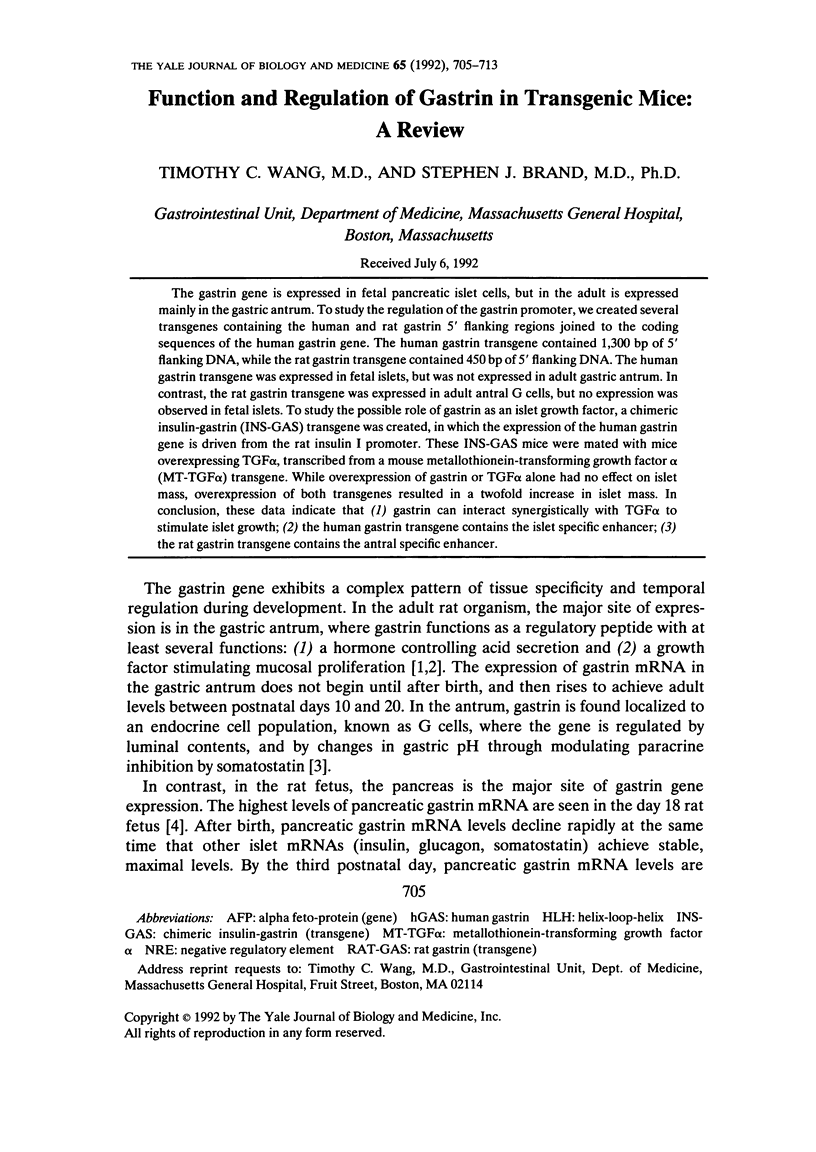
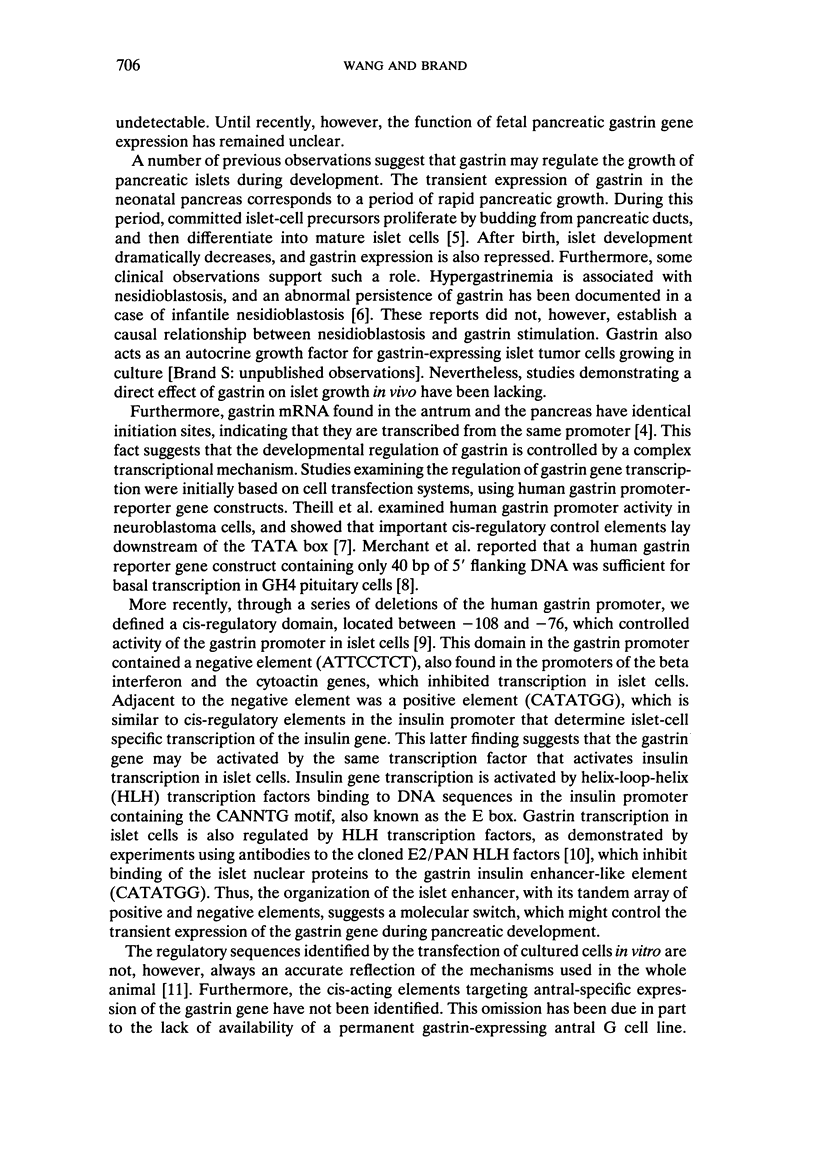
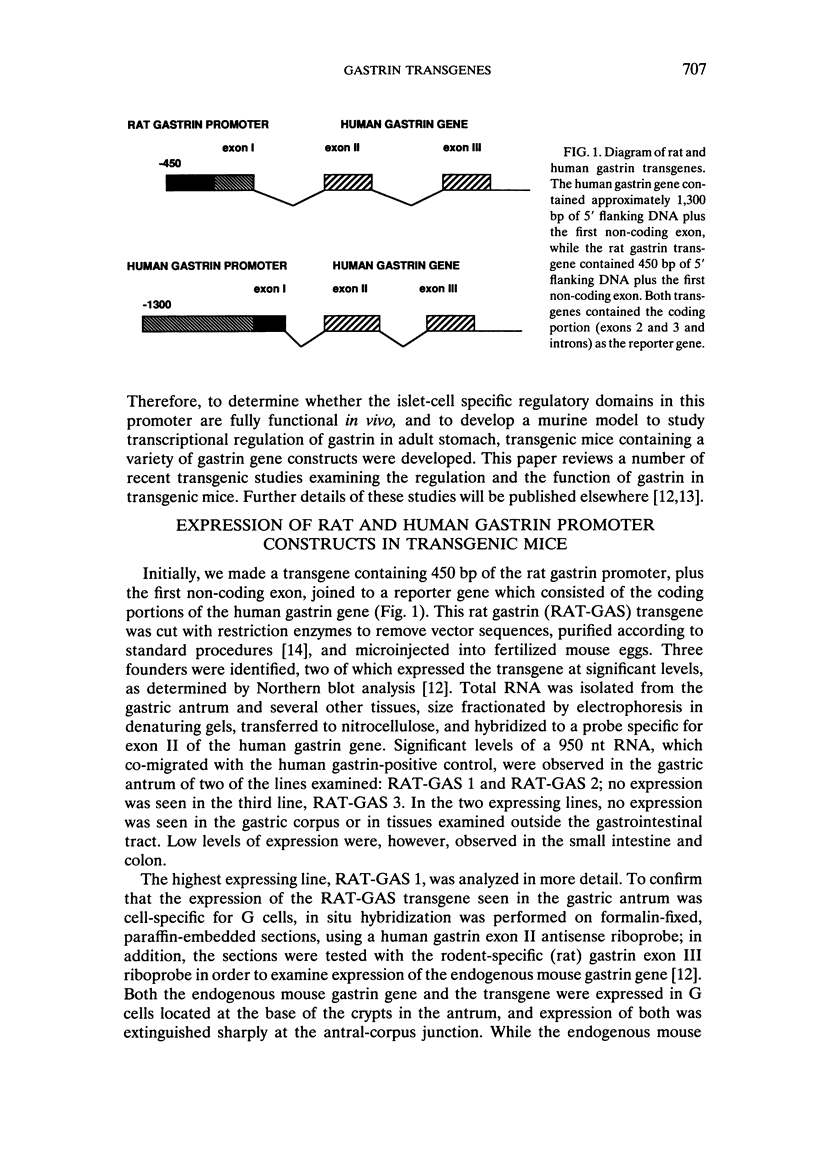
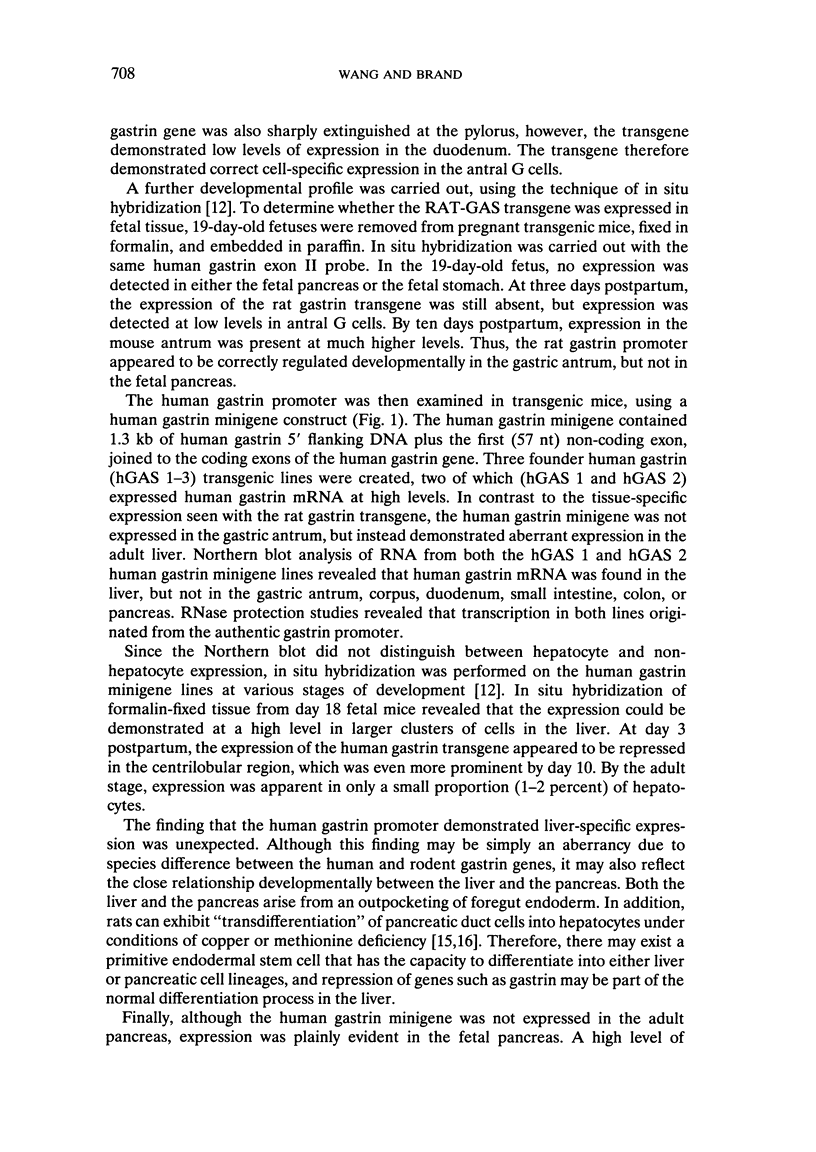
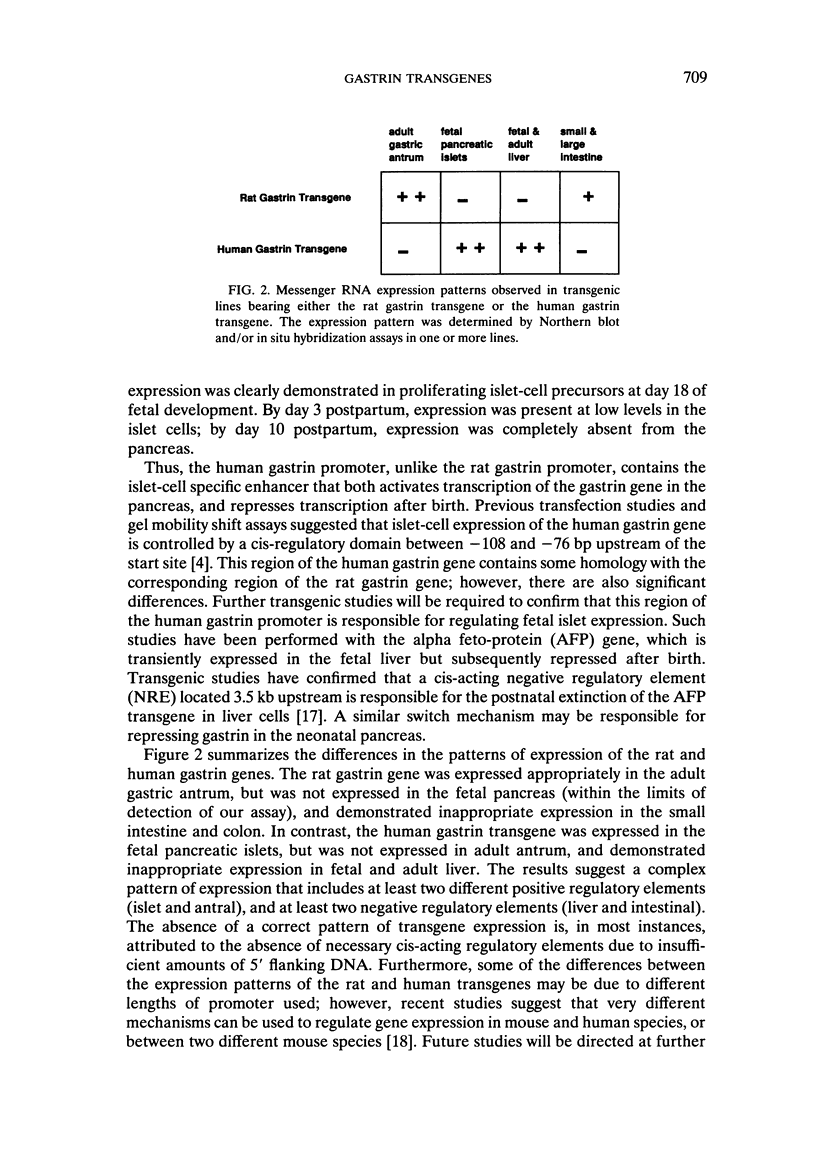
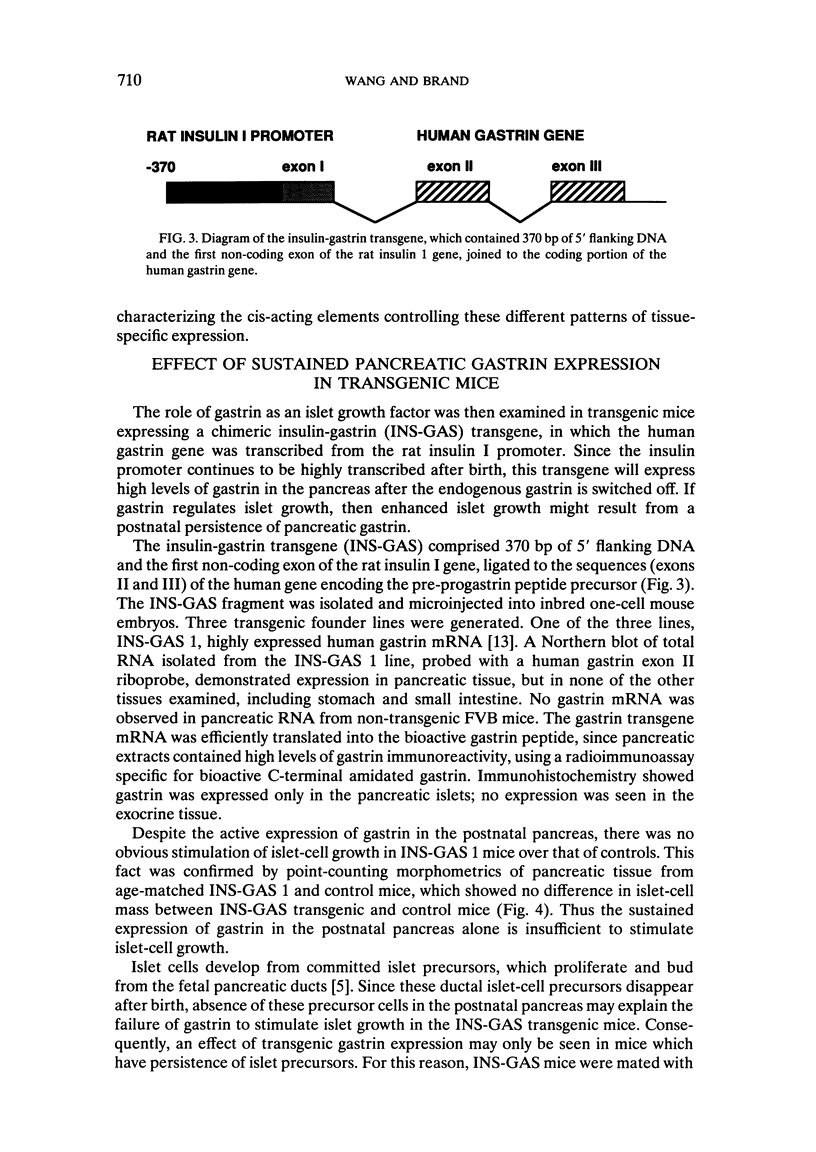
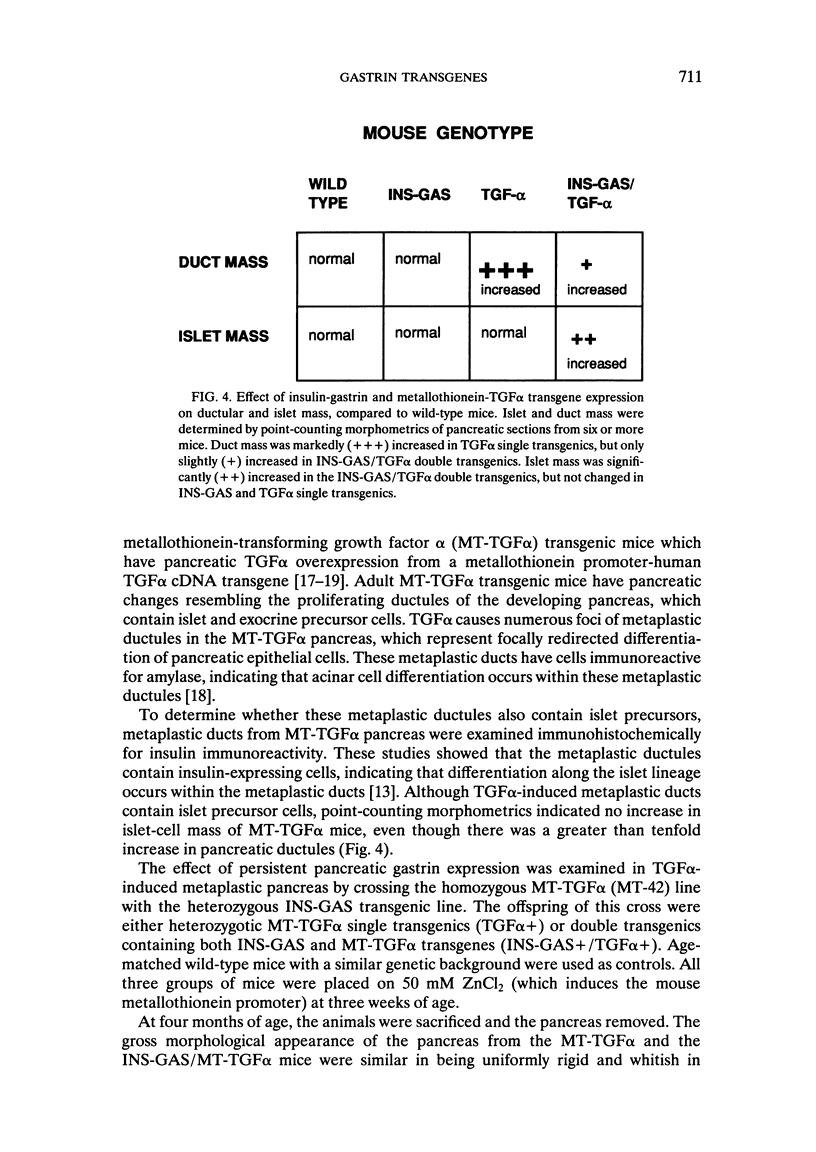
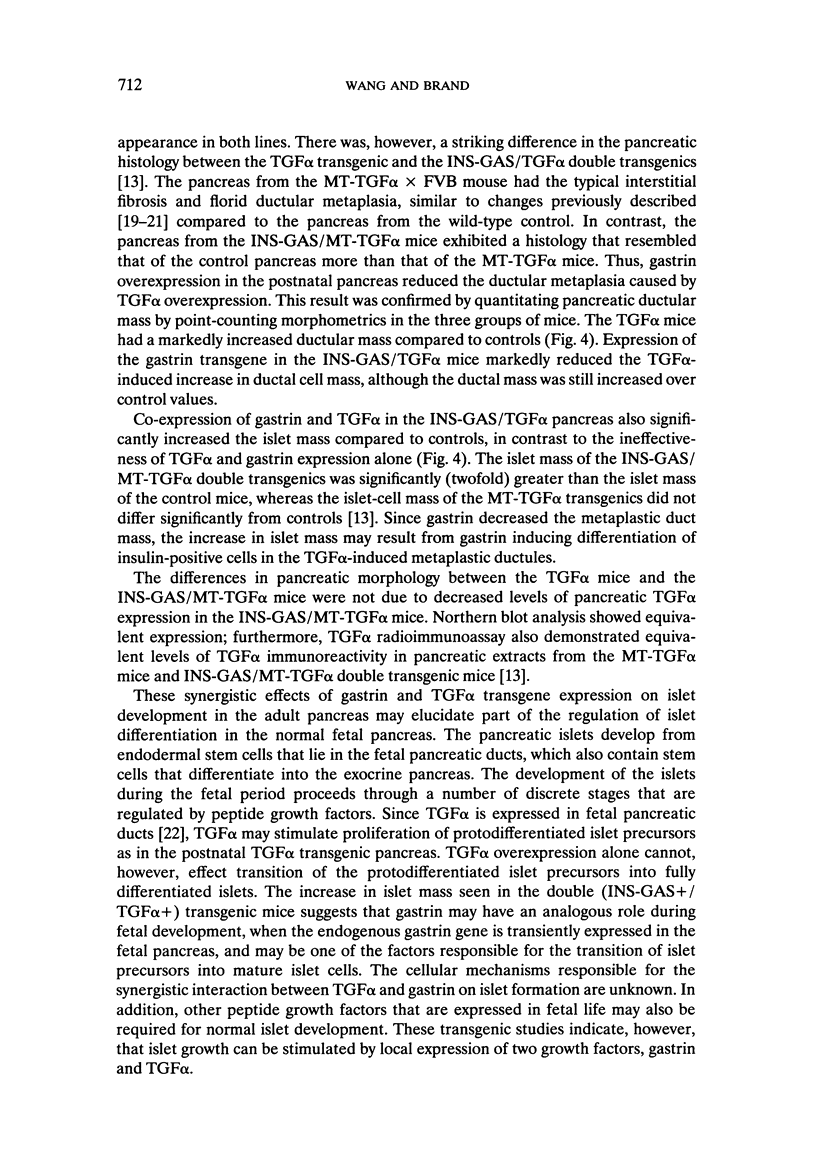
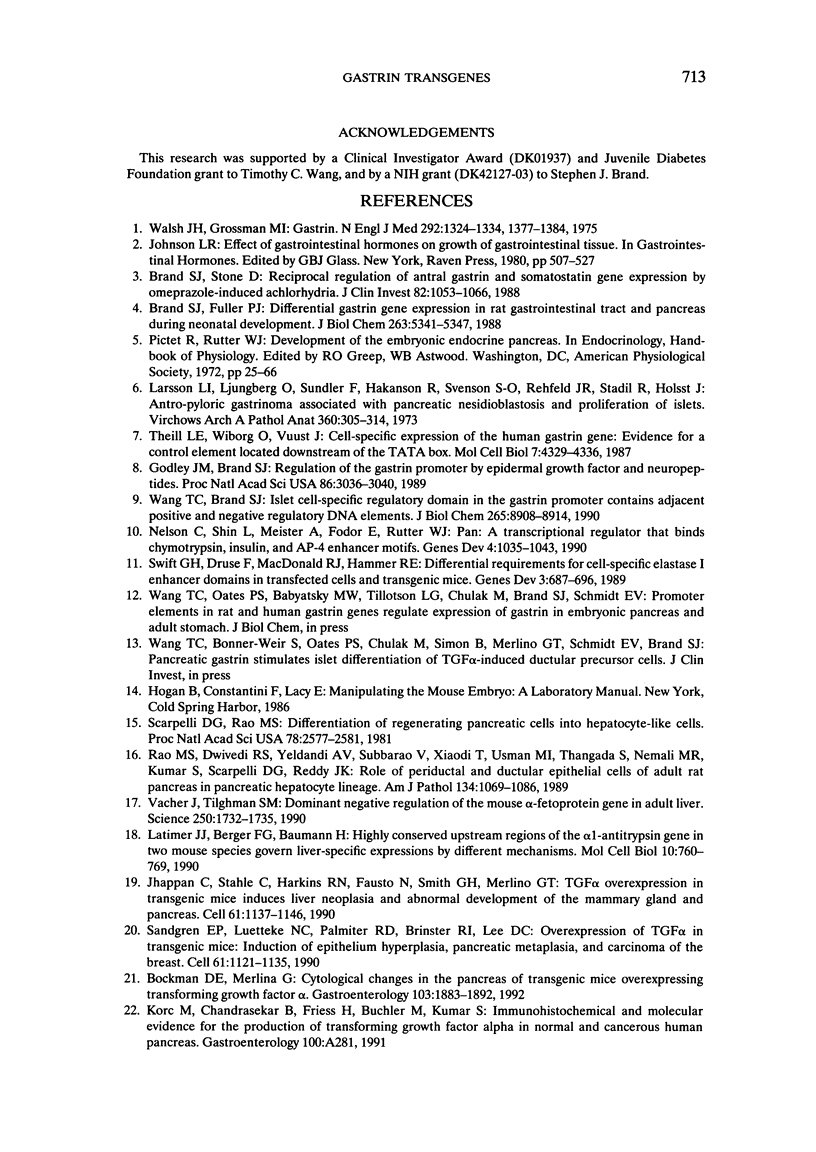
Selected References
These references are in PubMed. This may not be the complete list of references from this article.
- Bockman D. E., Merlino G. Cytological changes in the pancreas of transgenic mice overexpressing transforming growth factor alpha. Gastroenterology. 1992 Dec;103(6):1883–1892. doi: 10.1016/0016-5085(92)91448-d. [DOI] [PubMed] [Google Scholar]
- Brand S. J., Fuller P. J. Differential gastrin gene expression in rat gastrointestinal tract and pancreas during neonatal development. J Biol Chem. 1988 Apr 15;263(11):5341–5347. [PubMed] [Google Scholar]
- Brand S. J., Stone D. Reciprocal regulation of antral gastrin and somatostatin gene expression by omeprazole-induced achlorhydria. J Clin Invest. 1988 Sep;82(3):1059–1066. doi: 10.1172/JCI113662. [DOI] [PMC free article] [PubMed] [Google Scholar]
- Godley J. M., Brand S. J. Regulation of the gastrin promoter by epidermal growth factor and neuropeptides. Proc Natl Acad Sci U S A. 1989 May;86(9):3036–3040. doi: 10.1073/pnas.86.9.3036. [DOI] [PMC free article] [PubMed] [Google Scholar]
- Jhappan C., Stahle C., Harkins R. N., Fausto N., Smith G. H., Merlino G. T. TGF alpha overexpression in transgenic mice induces liver neoplasia and abnormal development of the mammary gland and pancreas. Cell. 1990 Jun 15;61(6):1137–1146. doi: 10.1016/0092-8674(90)90076-q. [DOI] [PubMed] [Google Scholar]
- Larsson L. I., Ljungberg O., Sundler F., Håkanson R., Svensson S. O., Rehfeld J., Stadil R., Holst J. Antor-pyloric gastrinoma associated with pancreatic nesidioblastosis and proliferation of islets. Virchows Arch A Pathol Pathol Anat. 1973;360(4):305–314. doi: 10.1007/BF00548351. [DOI] [PubMed] [Google Scholar]
- Latimer J. J., Berger F. G., Baumann H. Highly conserved upstream regions of the alpha 1-antitrypsin gene in two mouse species govern liver-specific expression by different mechanisms. Mol Cell Biol. 1990 Feb;10(2):760–769. doi: 10.1128/mcb.10.2.760. [DOI] [PMC free article] [PubMed] [Google Scholar]
- Nelson C., Shen L. P., Meister A., Fodor E., Rutter W. J. Pan: a transcriptional regulator that binds chymotrypsin, insulin, and AP-4 enhancer motifs. Genes Dev. 1990 Jun;4(6):1035–1043. doi: 10.1101/gad.4.6.1035. [DOI] [PubMed] [Google Scholar]
- Rao M. S., Dwivedi R. S., Yeldandi A. V., Subbarao V., Tan X. D., Usman M. I., Thangada S., Nemali M. R., Kumar S., Scarpelli D. G. Role of periductal and ductular epithelial cells of the adult rat pancreas in pancreatic hepatocyte lineage. A change in the differentiation commitment. Am J Pathol. 1989 May;134(5):1069–1086. [PMC free article] [PubMed] [Google Scholar]
- Sandgren E. P., Luetteke N. C., Palmiter R. D., Brinster R. L., Lee D. C. Overexpression of TGF alpha in transgenic mice: induction of epithelial hyperplasia, pancreatic metaplasia, and carcinoma of the breast. Cell. 1990 Jun 15;61(6):1121–1135. doi: 10.1016/0092-8674(90)90075-p. [DOI] [PubMed] [Google Scholar]
- Scarpelli D. G., Rao M. S. Differentiation of regenerating pancreatic cells into hepatocyte-like cells. Proc Natl Acad Sci U S A. 1981 Apr;78(4):2577–2581. doi: 10.1073/pnas.78.4.2577. [DOI] [PMC free article] [PubMed] [Google Scholar]
- Swift G. H., Kruse F., MacDonald R. J., Hammer R. E. Differential requirements for cell-specific elastase I enhancer domains in transfected cells and transgenic mice. Genes Dev. 1989 May;3(5):687–696. doi: 10.1101/gad.3.5.687. [DOI] [PubMed] [Google Scholar]
- Theill L. E., Wiborg O., Vuust J. Cell-specific expression of the human gastrin gene: evidence for a control element located downstream of the TATA box. Mol Cell Biol. 1987 Dec;7(12):4329–4336. doi: 10.1128/mcb.7.12.4329. [DOI] [PMC free article] [PubMed] [Google Scholar]
- Vacher J., Tilghman S. M. Dominant negative regulation of the mouse alpha-fetoprotein gene in adult liver. Science. 1990 Dec 21;250(4988):1732–1735. doi: 10.1126/science.1702902. [DOI] [PubMed] [Google Scholar]
- Walsh J. H., Grossman M. I. Gastrin (first of two parts). N Engl J Med. 1975 Jun 19;292(25):1324–1334. doi: 10.1056/NEJM197506192922505. [DOI] [PubMed] [Google Scholar]
- Wang T. C., Brand S. J. Islet cell-specific regulatory domain in the gastrin promoter contains adjacent positive and negative DNA elements. J Biol Chem. 1990 May 25;265(15):8908–8914. [PubMed] [Google Scholar]


